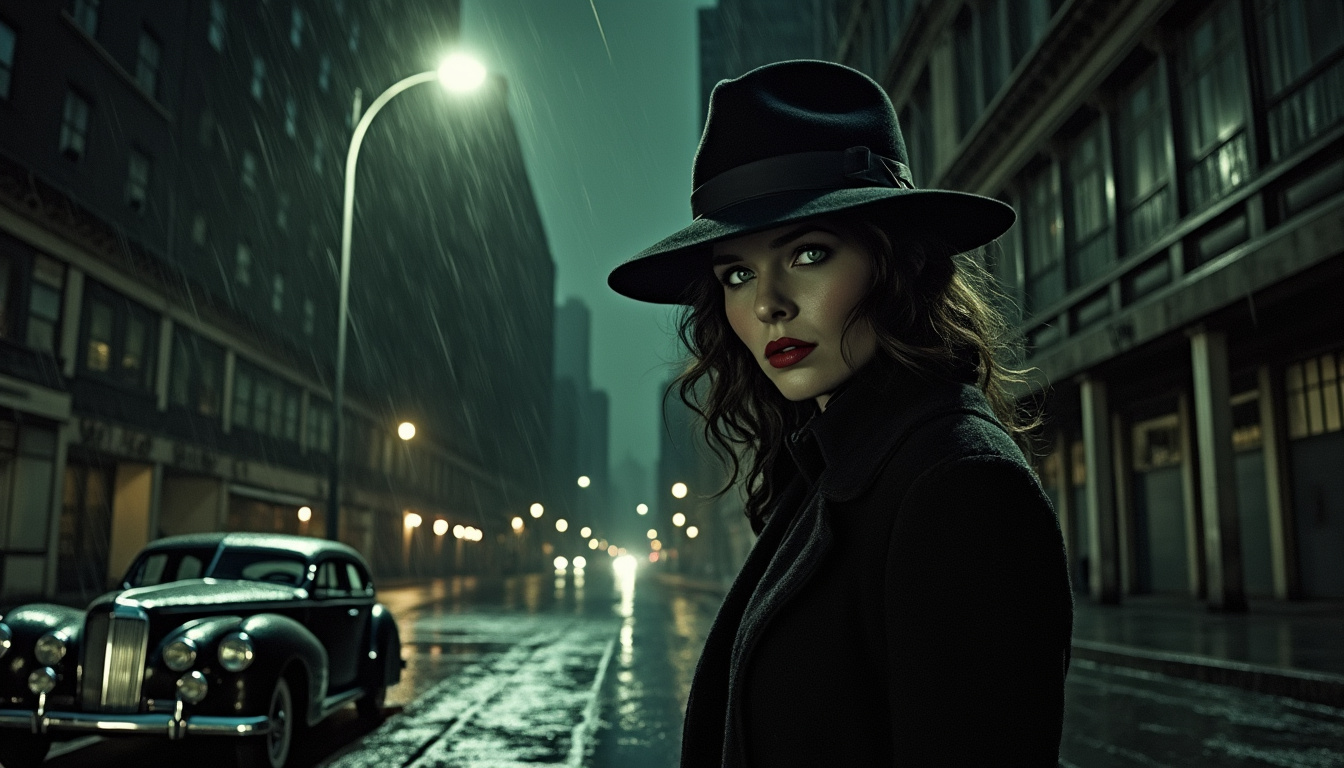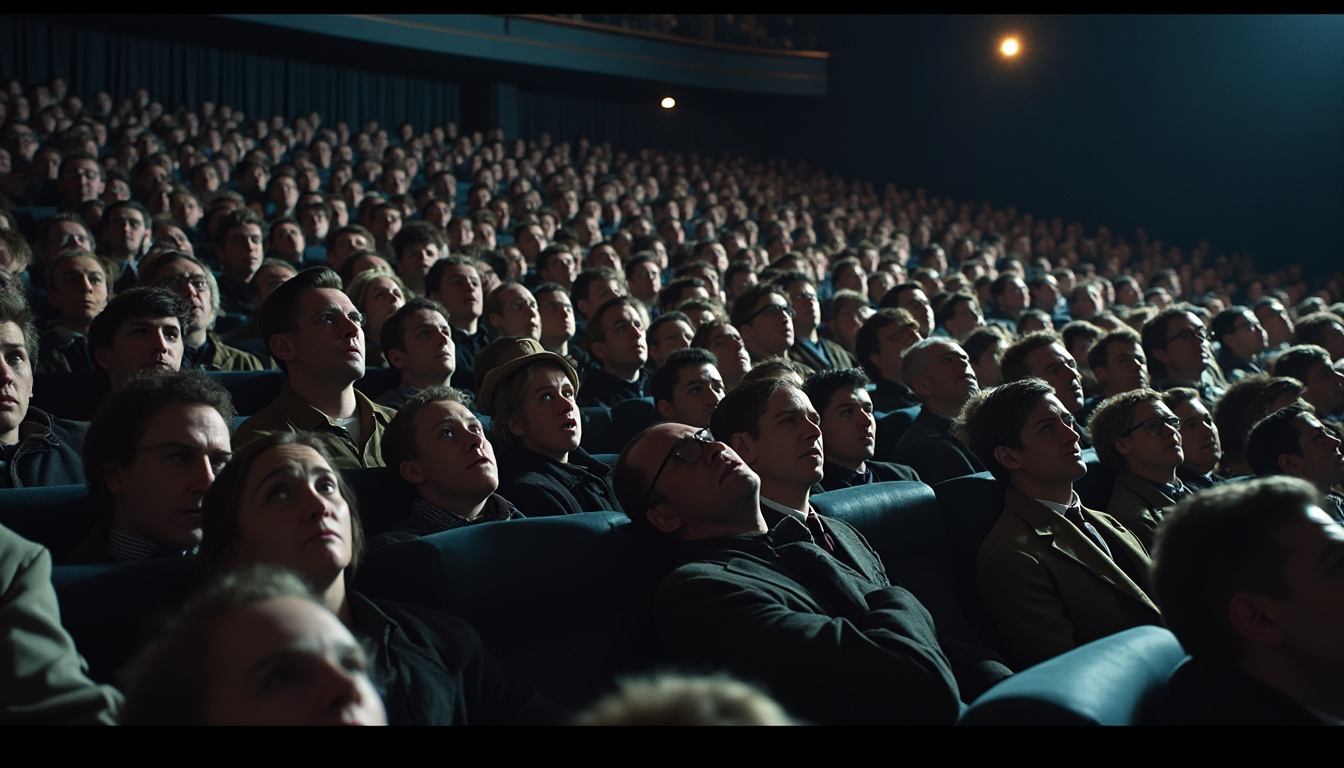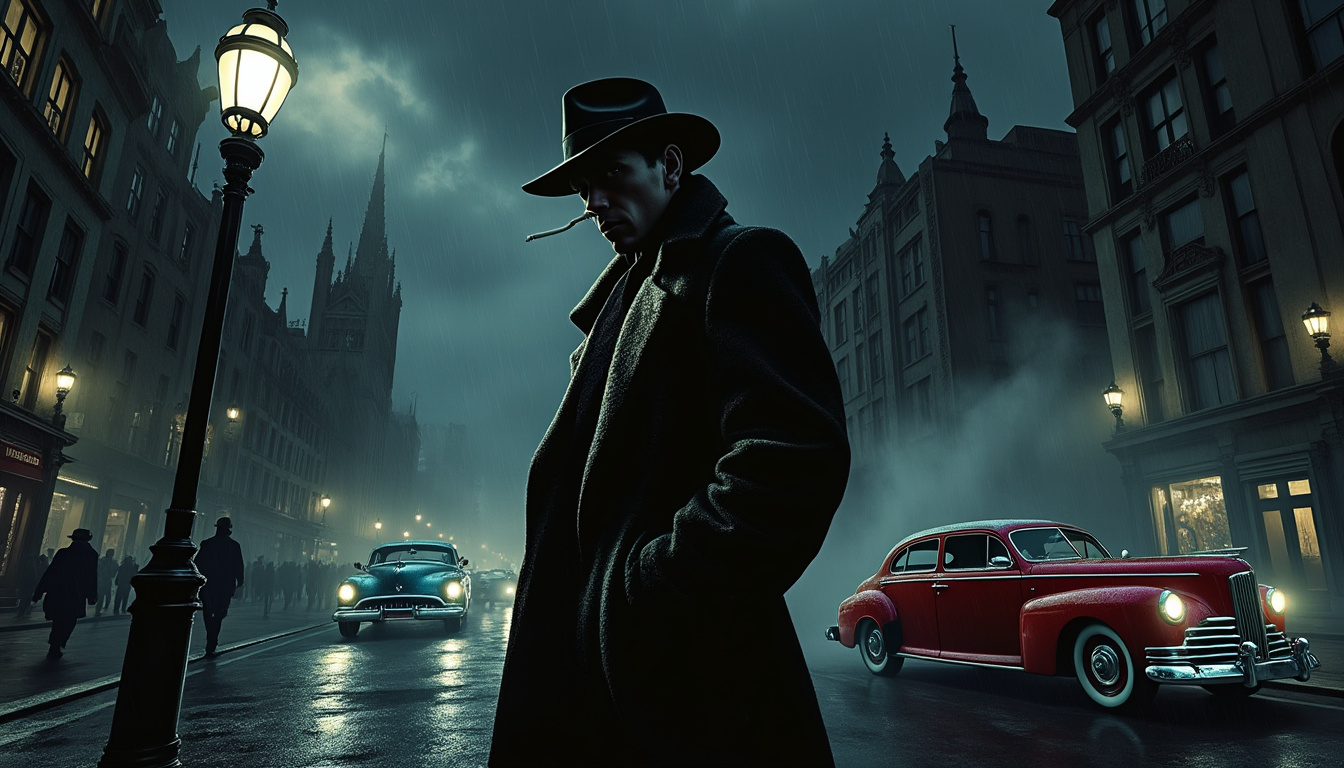The unveiling of the 4K restoration of The Good German offers a fresh lens into Steven Soderbergh’s homage to classic film noir, a genre that has captivated audiences since its inception. Set against the backdrop of post-World War II Berlin, the film interlaces elements of traditional noir with contemporary storytelling techniques, creating a unique duality that reflects both nostalgia and modernity. Soderbergh’s exploration of this cinematic style provides a rich opportunity to delve into the artistic choices he made, the performances delivered by a star-studded cast, and the technical achievements that have redefined the film’s viewing experience in the current era of digital cinema.
Exploring the Noir Aesthetic in The Good German
In The Good German, released in 2006, Soderbergh embraces the defining characteristics of the film noir genre, including the use of chiaroscuro lighting, complex characters, and a morally ambiguous narrative. Drawing heavily from the visual language of the 1940s, Soderbergh meticulously analyzed the techniques that defined the era’s cinematic works. The film’s black-and-white palette pays homage to the aesthetics of classic noir, while its presentation in a 1.33:1 aspect ratio evokes the feel of vintage 35mm films.
The plot unfolds in Berlin during 1945, a city fragmented by war’s devastation, where multi-dimensional characters navigate treachery and betrayal for survival. At the core of the narrative is Jake Geismer, played by George Clooney, a U.S. Army war correspondent who finds himself enmeshed in a web of intrigue surrounding Lena Brandt, portrayed by Cate Blanchett. As they delve deeper into a world rife with deception, the film explores themes of loyalty, love, and the pursuit of power in the shadow of conflict.

Capturing Traditional Techniques
Soderbergh’s commitment to authenticity is evidenced through both the narrative and technical elements of the film. He utilized vintage equipment to enhance the film’s retro feel, employing 1940s wide-angle lenses and incandescent lighting, which create a distinct atmospheric depth. Consequently, the 4K restoration amplifies these traits, showcasing intricate details in the set and lighting design. This painstaking attention to detail facilitates a viewing experience that feels as though the audience has been transported back to post-war Europe.
Moreover, the use of rear projection during certain sequences not only anchors the film in its historical context but also serves as a stylistic homage to the filmmaking practices of its era. This method creates a striking juxtaposition against the newfound clarity of 4K UHD. Spectators will appreciate the tonal harmony, as the HDR10 and Dolby Vision enhancements heighten contrast, resulting in a visually compelling narrative.
| Technique | Description | Impact on Film |
|---|---|---|
| Chiaroscuro Lighting | High contrast between light and dark elements | Creates a sense of foreboding and depth |
| Aspect Ratio | 1.33:1 to mimic classic films | Evokes nostalgia and authenticity |
| Vintage Equipment | 1940s lenses and lighting rigs | Enhances the historical atmosphere |
Character Complexity in a Tense Narrative
The film’s characters are steeped in moral ambiguity—a hallmark of the noir genre. Jake Geismer, with his flaws and vulnerabilities, embodies the quintessential flawed hero. As he embarks on a quest to uncover the truth about Lena’s missing husband, audiences are drawn into a labyrinth of lies that challenges Geismer’s integrity and ultimately, his survival.
Lena Brandt’s character adds layers of intrigue. As a woman faced with desperate circumstances, her motivations oscillate between longing for safety and self-preservation. This conflict underlines the psychological stakes prevalent in film noir, where characters often grapple with competing interests. Tobey Maguire’s role as a morally dubious soldier further complicates the narrative, serving as both a potential ally and a formidable obstacle.
4K Restoration: A Technical Marvel
The recent restoration of The Good German to 4K UHD invites both new viewers and seasoned fans of Soderbergh to rediscover the film with fresh eyes. While the film initially did not garner the acclaim expected of a Soderbergh project, the enhanced picture and audio quality broaden the opportunities for appreciation. The sharpness granted by 4K technology allows for a heightened sense of detail that showcases the film’s craftsmanship, from the costumes to the set pieces.
Notably, the film’s sound design has received a commendable boost in this restoration. The DTS-HD Master Audio 5.1 mix ensures clarity of dialogue and a sound environment that immerses the viewer within the scene. The audio design particularly thrives in establishing the tension that permeates the narrative, augmented by atmospheric sounds that breathe life into the film’s settings.
A Shift in Perception
Originally facing criticism for its lack of engaging storytelling, the 4K release transcends previous reservations by emphasizing the aesthetic qualities inherent in Soderbergh’s vision. Viewing the film through the lens of a technical achievement rather than solely a narrative experience allows for a richer appreciation of its artistry. Audiences come away recognizing that even films viewed as less favorable in a director’s oeuvre can illuminate the evolution of cinematic techniques.
- Enhanced detail in character performances
- Vivid displays of lighting achieving dramatic effects
- Improved audio clarity immersing viewers in the environment
The Value of Curated Experiences
As cinematic experiences evolve with innovative technology, the opportunity to engage with films like The Good German unveils an important dialogue about what defines a successful movie. While the narrative may not resonate universally, the meticulous restoration process beckons a re-evaluation, particularly for those entrenched in the nuances of film history. Furthermore, this serves as a reminder that each film illustrates the artistry of its creators, often reflecting the culture and circumstances of its time.
| Technical Aspect | Original | 4K Restoration |
|---|---|---|
| Image Quality | Standard Definition | Ultra HD Clarity |
| Sound Quality | Standard Audio Mix | DTS-HD Master Audio 5.1 |
| Aspect Ratio | 1.33:1 | Maintained |
Audience Reception and Critique
The critical reception of The Good German upon its initial release was markedly mixed. Many critics lauded the film’s ambition but criticized its pacing and overall narrative strength. While the technical achievements of the film are undeniable, the thematic depth and character arcs felt underexplored for some. However, the 4K restoration allows for reassessment by presenting its artistic elements anew, paving the way for discussions surrounding Soderbergh’s choices and the experience of film noir.
Engaging Diverse Viewership
The 4K upgrade diverts the focus from critique to appreciation, inviting a broader audience to engage with the film. Film enthusiasts who admire the technical aspects of cinema may find collectors’ arguing for its significance in cinematic history. The restoration sparks curiosity among younger audiences, who may first discover Soderbergh’s work through streaming platforms. This newfound interest in classic techniques juxtaposed with modern storytelling could bridge the gap between generations of viewers.

- Potential for re-evaluation within film studies
- Connection to younger viewers through contemporary mediums
- Highlighting Soderbergh’s unique directorial style
The Limitations of Special Features
One point of contention among fans is the lack of comprehensive special features accompanying the 4K release. While the film is a visual feast, the absence of commentary tracks or in-depth documentaries detracts from the educational potential of the release. The limited bonus content may leave viewers craving deeper insights into Soderbergh’s creative decision-making process and may reflect a missed opportunity for enriched engagement.
| Available Features | Quantity | Comments |
|---|---|---|
| Theatrical Trailer | 1 | Brief and lacks detail |
| Director Commentary | 0 | None available |
| Documentary Features | 0 | Not provided |
The Legacy of Steven Soderbergh
Even amid contrasting opinions, The Good German retains a crucial place within Steven Soderbergh’s filmography, showcasing his bold experimentation with form and narrative. It emphasizes his unique contributions to contemporary cinema as he consistently rebuffs traditional expectations. While other projects, like Ocean’s Eleven or Traffic, have garnered widespread acclaim, the film’s place reveals the breadth of his creative pursuits.
A Reflection of Cinematic Evolution
The journey of The Good German towards recognition serves as a reflection of the wider evolution of cinema itself. As technology advances and viewing habits shift profoundly, films that once fell flat may rise anew in cultural significance. The advancement of restoration techniques, such as those applied to this film, plays a pivotal role in reevaluating not just individual titles, but also the historical contexts that shaped their narratives. Thus, every film, even those initially perceived as failures, contributes to the grand tapestry of cinematic history.
Through the advanced restoration of The Good German, audiences are afforded a new perspective on a film that showcases an era of noir cinema while illustrating the blending of old techniques with new technology. Soderbergh’s willingness to explore diverse artistic realms, regardless of box office reception, must be celebrated. As cinematic landscapes rapidly change, revisiting such films underscores the value and continued relevance of classic storytelling methods.


